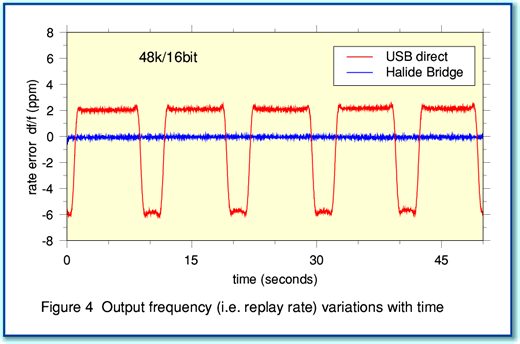My Benchmark DAC 1 has 4 inputs: adaptive mode USB, Toslink, SPDIF and AES/EBU
My iMac has USB and Toslink.
I borrowed a Vlink192 from a friend so now I have an asynchronous USB converter with SPDIF (RCA) and AES/EBU out.
In JRiver I created 3 zones (Benchmark USB, Toslink, Vlink) and linked them.
Now they all play in sync.
All digital volume controls are disabled in JRiver so 100% for each output.
All zones set to WASAPI with the same buffer size.
All zones set to 24 bit and no re-sampling in DSP studio
Too the best of my knowledge no DSP is going on in any zone.
The toggle switch of the Benchmark allows for a rapid switching between the 4 inputs.
Listening was done using a Sennheiser HD600 headphone.
The adaptive mode USB of the Benchmark sounds good. Wide sound stage, dynamic.
The moment I switch to Toslink the individual instruments become more clear, less blurred compared with the adaptive mode USB. Obvious the resolution improves by resolving small details better. As a consequence the soundstage narrows and it sounds less dynamic.
One can also say the adaptive mode screams.
That’s the problem when comparing, there is an audible difference but the qualification is and will always remain a highly subjective judgment.
A likewise but smaller improvement is audible the moment I switch to the Vlink192.
I don’t hear any difference between the SPDIF (BNC cable with RCA adapter) and AES/EBU (110 ohm XLR terminated).
Using the Vlink192 yields a subtle improvement in sound quality.
As all zones send the same bits to the DAC this is probably due to a better jitter performance of the Vlink192.
My iMac has USB and Toslink.
I borrowed a Vlink192 from a friend so now I have an asynchronous USB converter with SPDIF (RCA) and AES/EBU out.
In JRiver I created 3 zones (Benchmark USB, Toslink, Vlink) and linked them.
Now they all play in sync.
All digital volume controls are disabled in JRiver so 100% for each output.
All zones set to WASAPI with the same buffer size.
All zones set to 24 bit and no re-sampling in DSP studio
Too the best of my knowledge no DSP is going on in any zone.
The toggle switch of the Benchmark allows for a rapid switching between the 4 inputs.
Listening was done using a Sennheiser HD600 headphone.
The adaptive mode USB of the Benchmark sounds good. Wide sound stage, dynamic.
The moment I switch to Toslink the individual instruments become more clear, less blurred compared with the adaptive mode USB. Obvious the resolution improves by resolving small details better. As a consequence the soundstage narrows and it sounds less dynamic.
One can also say the adaptive mode screams.
That’s the problem when comparing, there is an audible difference but the qualification is and will always remain a highly subjective judgment.
A likewise but smaller improvement is audible the moment I switch to the Vlink192.
I don’t hear any difference between the SPDIF (BNC cable with RCA adapter) and AES/EBU (110 ohm XLR terminated).
Using the Vlink192 yields a subtle improvement in sound quality.
As all zones send the same bits to the DAC this is probably due to a better jitter performance of the Vlink192.


